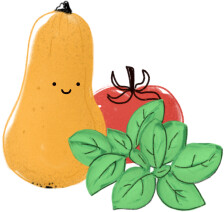Tremolo F1

Variety
Tremolo F1
Approved Data
created by steffen a. at 25.05.2023
Features
Fruit shape
blue
Color
rot
Location
Gewächshaus
Beet
warmer Standort
Growth habit
hoch
muss gestützt werden
Geschmack
zuckersüß
feinsäuerlich
Season Overview
Propagating
Planting
Harvest
J
F
M
A
M
J
J
A
S
O
N
D
Description
The F1 hybrid cherry tomato 'Tremolo' is known above all for its very strong fruit sweetness. The honey tomato produces 10-20 cm long, roundish, intensely red, glossy tomatoes with a great taste balance between sour and sweet, with the sweetness clearly dominating. Growing height: 150-200 cm. This variety is the successor to the cherry tomato 'Nectar'. (from Kiepenkerl)
F1 Hybrid
Not frost resistant
Growing tips
The F1 hybrid is pre-cultivated in February, March or April. Germination in 7-14 days at 20-25°C. The young plants should be pricked out in pots as soon as possible. The tomato plants can only be planted outside after the frost. If the variety is grown in containers, support is essential. The honey tomato has a high water requirement, especially when grown in pots. 'Tremolo' is also suitable for protected outdoor cultivation. The early breaking out of the side shoots ensures a good yield. The high-yielding harvest takes place from July to September. Watering tomatoes: Depending on whether you are pre-sowing or direct sowing tomatoes, and depending on the location and variety, you will need to water your tomato plants differently often. Tomatoes can develop very deep roots that can even draw water from the groundwater. In this case, you hardly need to water them, if at all. Pay attention to the leaves, if they hang limp you should water your tomato plants. The soil dries out more quickly, especially in pots, raised beds and raised beds, so you will need to water them more often.
Details
Light requirement
Sunny
Water requirement
Moist
Soil
Light (sandy)
Nutrient requirement
High
Plant distance
50 cm
Row spacing
60 cm
Seeding depth
1 cm
Companion Plants
Asparagus
Basil
Bean (Broad bean / Faba bean / Field bean)
Bean (Dwarf bean)
Bean (Runner bean)
Broccoli
Brussels sprouts
Cabbage (Cabbage)
Cabbage (Savoy cabbage)
Carrots
Cauliflower
Celery (Celeriac / Celery root)
Celery (Celery)
Chili
Chives
Collard greens (Kale)
Collard greens (Tuscan kale / Dinosaur kale / Palm tree kale)
Common marigold
Cress
Garlic
Kohlrabi / German turnip / Turnip cabbage
Leeks
Lettuce (Lettuce)
Mint
Napa cabbage / Chinese cabbage
Onion
Onion (Spring onion)
Oregano
Pak Choi
Parsley
Pepper / Paprika
Radish
Radishes
Spinach (Summer)
Antagonistic Plants
Diseases
Grey mold
Early blight of potato
Pests
Thrips
Aphids
Spider mites
White fly